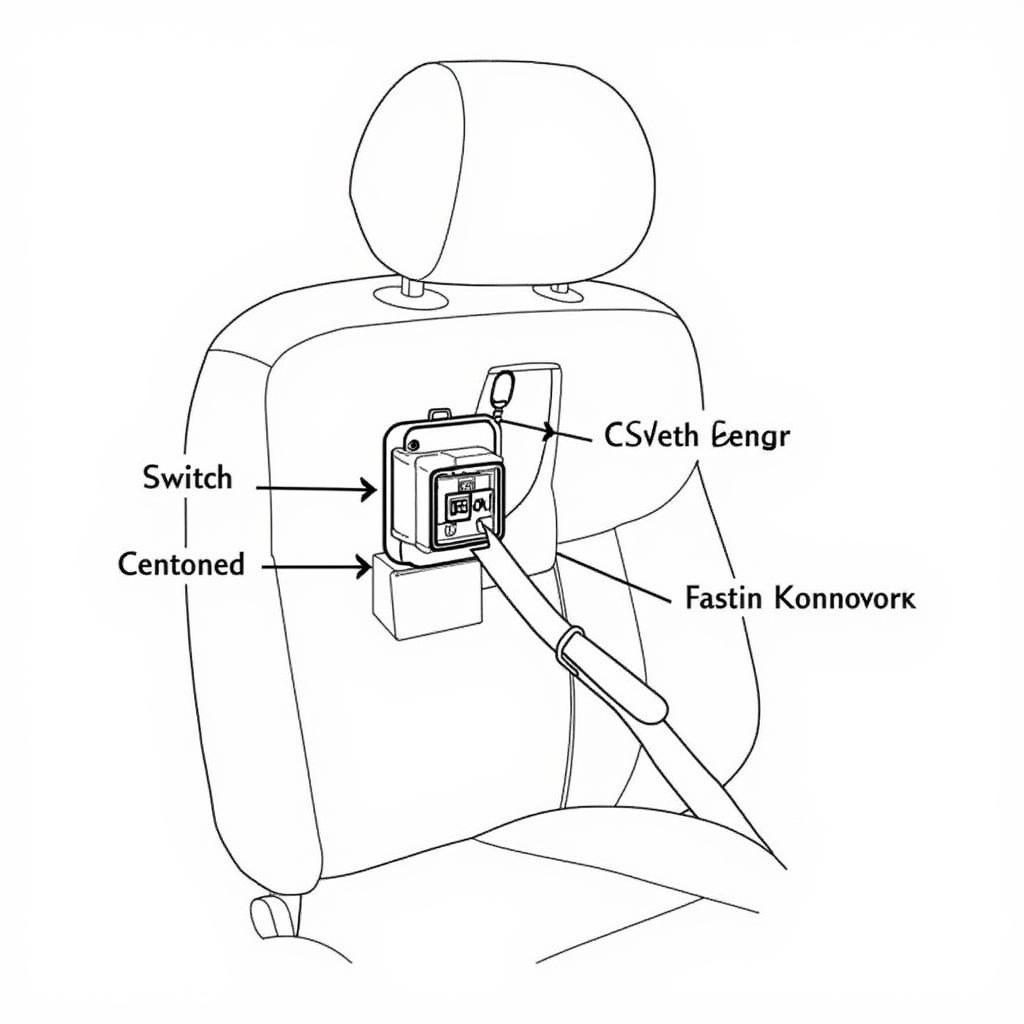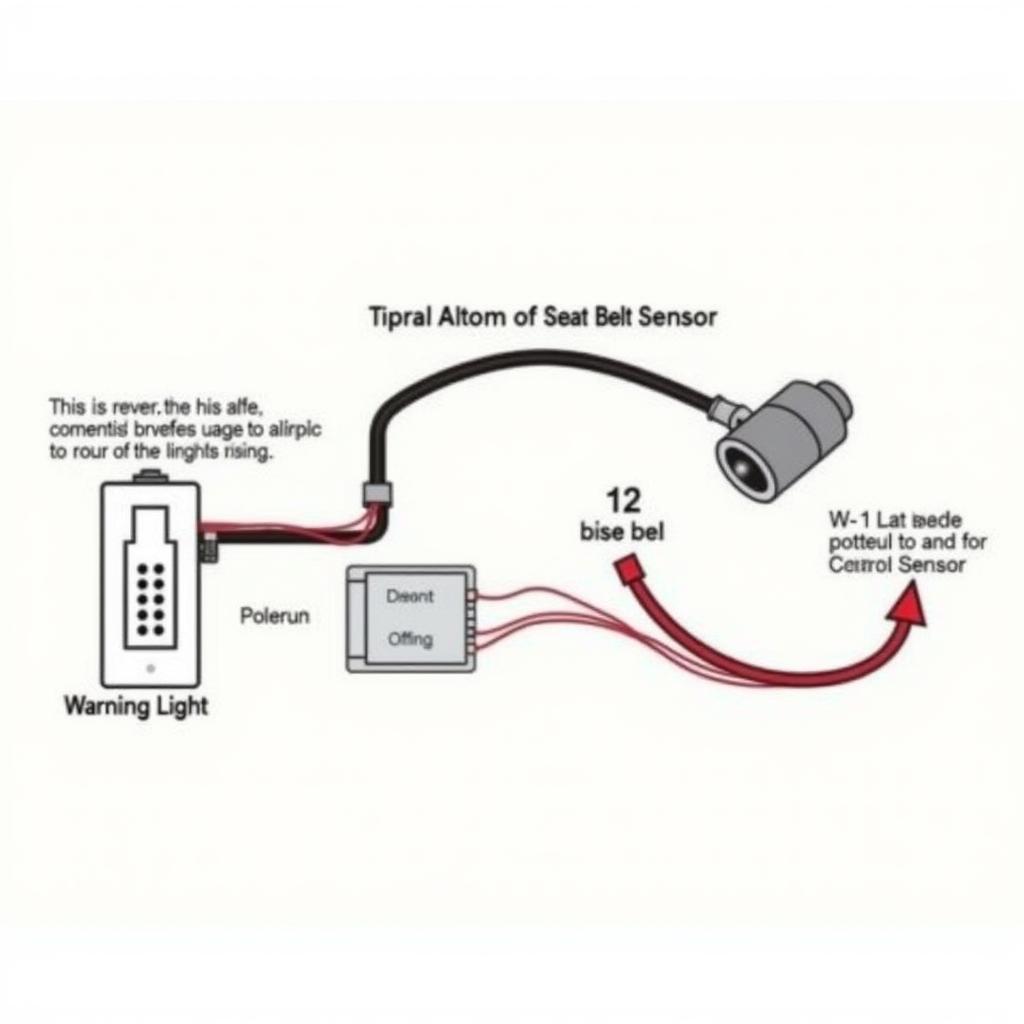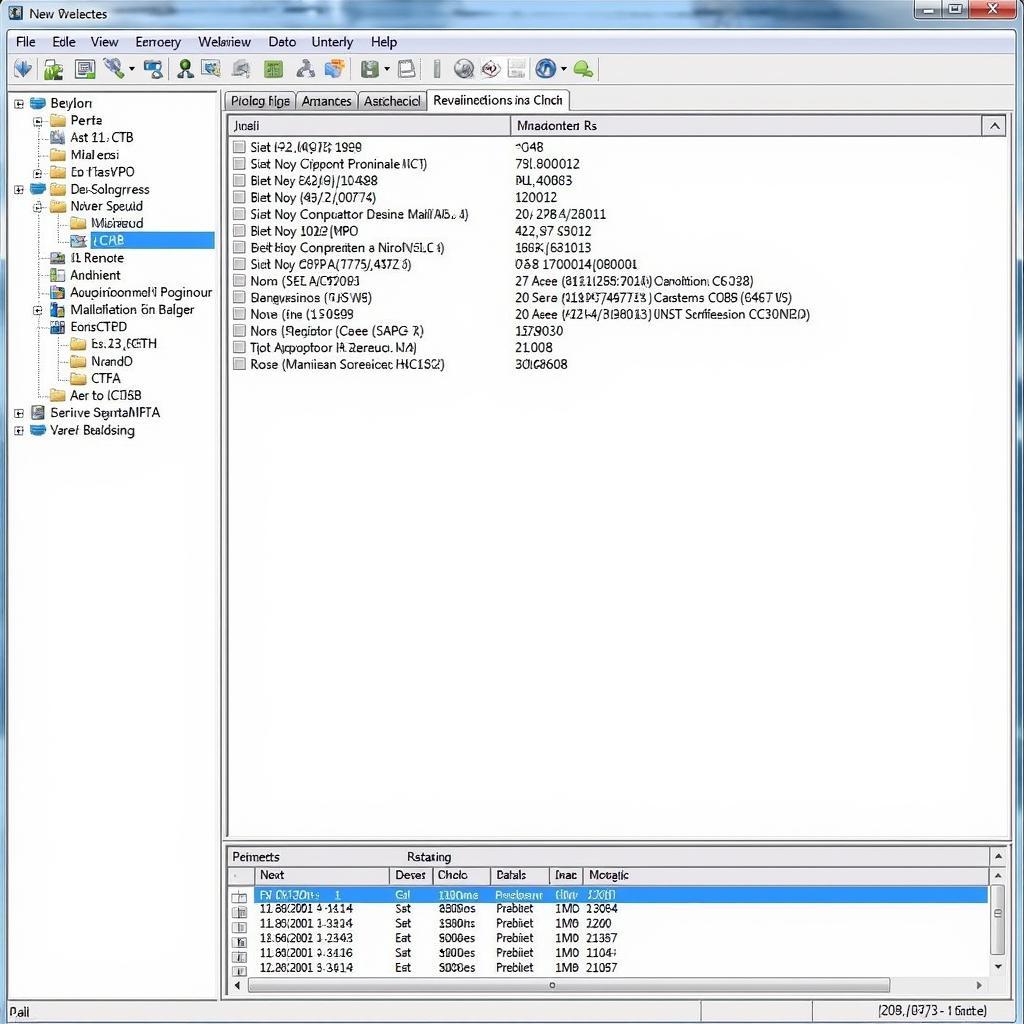The seat belt warning light works to keep you safe. It’s a crucial part of your vehicle’s safety system, designed to remind you and your passengers to buckle up. Understanding how this system functions, and what to do when it malfunctions, can be vital for both your safety and maintaining a smooth driving experience. This article delves into the intricacies of the seat belt warning system, offering troubleshooting tips and solutions for common issues.
If your seat belt warning light stays on even when you’re buckled up, or if it doesn’t illuminate when you’re not, it signals a potential problem. This issue can range from a simple loose connection to a more complex fault within the system. Ignoring the warning could not only compromise your safety but also lead to potential fines in many jurisdictions. You can learn more about how the system works at how seat belt warning light works.
Why is My Seat Belt Warning Light On?
Several factors can trigger a malfunctioning seat belt warning light. One common culprit is a faulty seat belt buckle or pretensioner. Over time, these components can wear down or become damaged, disrupting the signal sent to the vehicle’s computer. Another possibility is a problem with the wiring or connectors within the seat belt system. Corrosion, loose connections, or frayed wires can all interfere with the signal transmission. For specific car models, you can find tailored information, like addressing the seat belt warning in a Skoda Fabia, by exploring dedicated resources like skoda fabia seat belt warning light.
How the Seat Belt Warning System Works
The seat belt warning system operates through a network of sensors and components. When you buckle your seat belt, a sensor in the buckle detects the connection and sends a signal to the vehicle’s control module. This signal deactivates the warning light and silencer. If the sensor fails to detect a connection, or if there’s a problem in the wiring, the warning light will remain illuminated, and in many cases, an audible chime will sound.
 Seat Belt Buckle Sensor Diagram
Seat Belt Buckle Sensor Diagram
Troubleshooting Seat Belt Warning Light Issues
Before rushing to a mechanic, there are several troubleshooting steps you can take. First, visually inspect the seat belt buckle and pretensioner for any signs of damage or wear. Check for loose connections or frayed wires. If you find anything amiss, consult a professional for repair or replacement. Sometimes, the fix can be as simple as tightening a loose connection or cleaning a corroded contact. For specific make and model solutions, such as disabling the seat belt warning in a BMW X5, refer to resources like bmw x5 seat belt warning disable.
Common Seat Belt Warning Light Problems and Solutions
-
Light Stays On Even When Buckled: This often indicates a faulty buckle sensor, wiring issue, or a problem with the vehicle’s control module.
-
Light Doesn’t Come On: This could signify a burned-out bulb, a faulty sensor, or a problem within the wiring harness.
-
Intermittent Warning Light: This suggests a loose connection or a failing sensor.
-
Seat Belt Warning Sound Won’t Turn Off: This could be due to a faulty sensor or a problem with the chime module. If the sound persists, check resources like seat belt warning sound won’t turn off.
 Seat Belt Wiring Diagram
Seat Belt Wiring Diagram
“Regular maintenance and inspection of your seat belt system are crucial for ensuring its proper function,” says automotive electrical expert, David Miller. “Don’t ignore any warning signs, as a functioning seat belt system is paramount for your safety.”
Remote Diagnostics and Software Solutions
Advancements in automotive technology now allow for remote diagnostics and software solutions for certain seat belt warning light issues. Qualified technicians can access your vehicle’s computer system remotely to pinpoint the problem and, in some cases, even reprogram or update the software to resolve the issue. This can save you time and money compared to traditional diagnostic methods. For specific model year instructions, like turning off the seat belt warning in a 2016 Honda HRV, you can find resources such as 2016 honda hrv turn off fasten seat belt warning.
 Remote Diagnostics Software Interface
Remote Diagnostics Software Interface
“Remote diagnostics can be a highly effective tool for quickly identifying and resolving seat belt warning light problems,” notes automotive engineer, Sarah Johnson. “It’s a testament to the advancements in automotive technology and its potential to improve vehicle maintenance.”
In conclusion, the seat belt warning light works to ensure your safety. Understanding its function and addressing any malfunctions promptly is essential. By following the troubleshooting tips and considering remote diagnostic solutions, you can keep your seat belt system in optimal condition and enjoy a safer driving experience. Remember, a functioning seat belt can be the difference between life and death in an accident.



